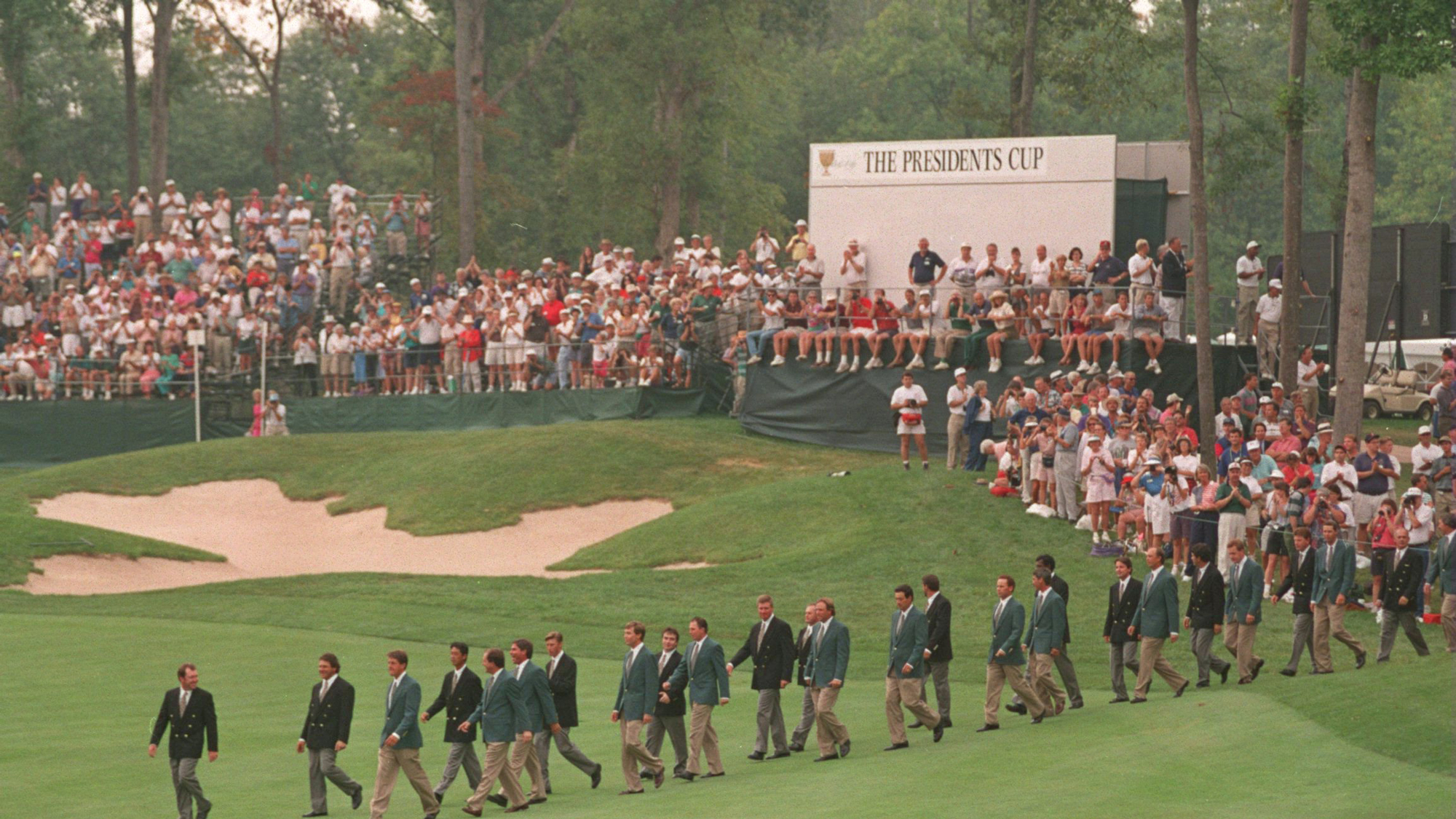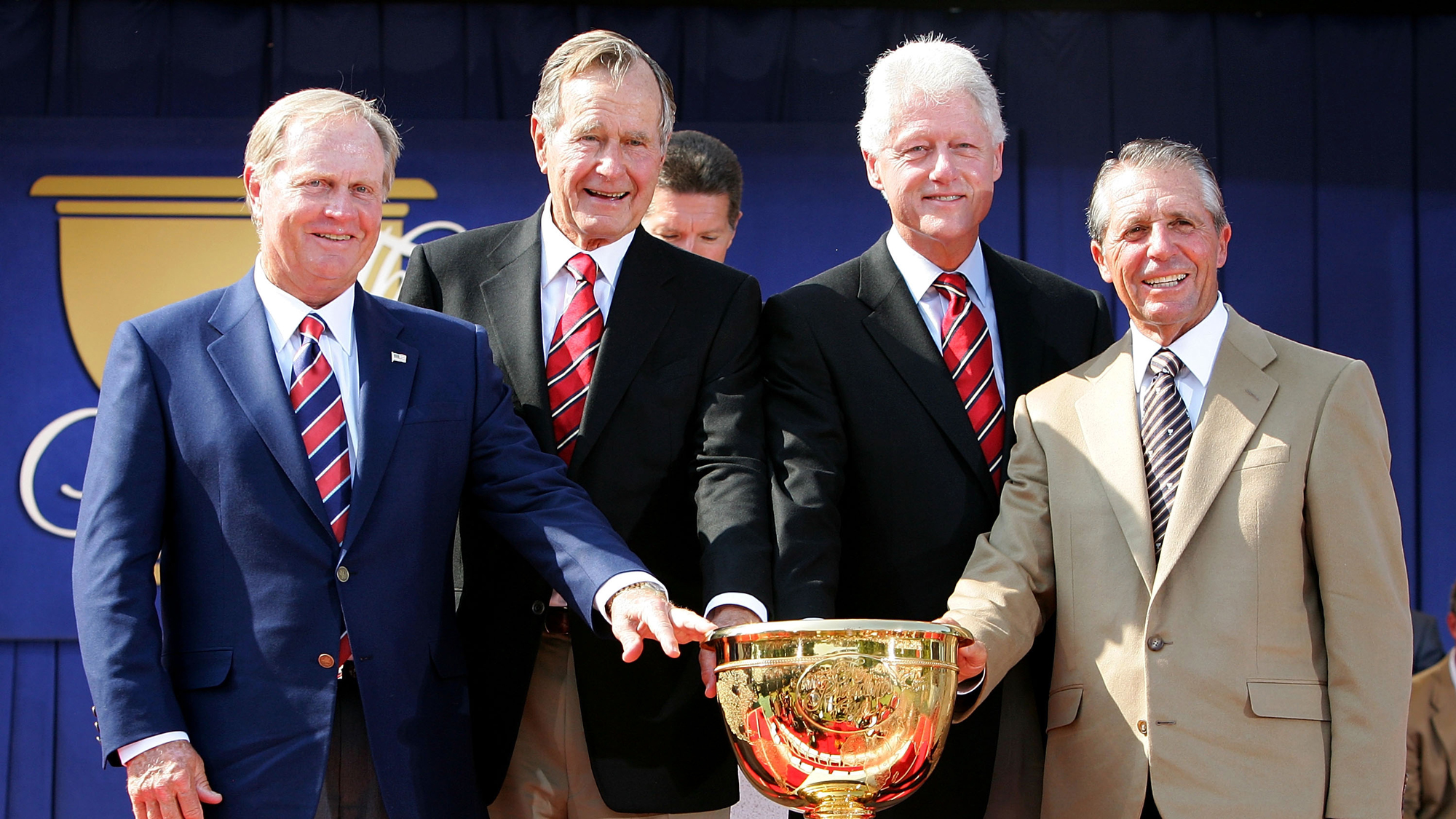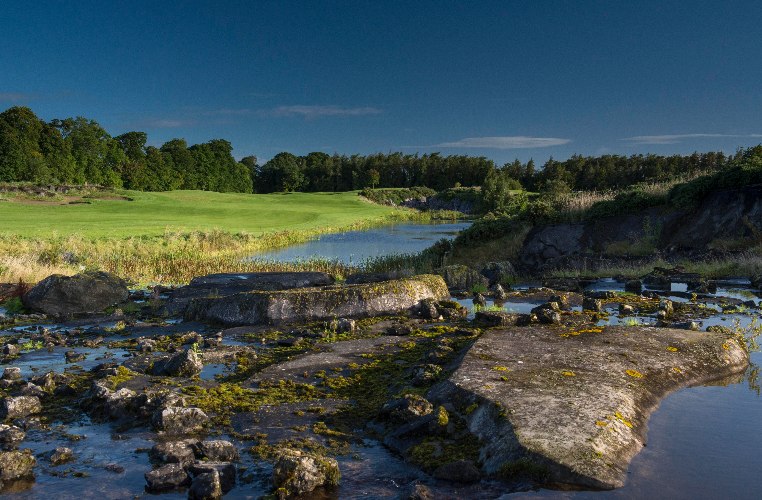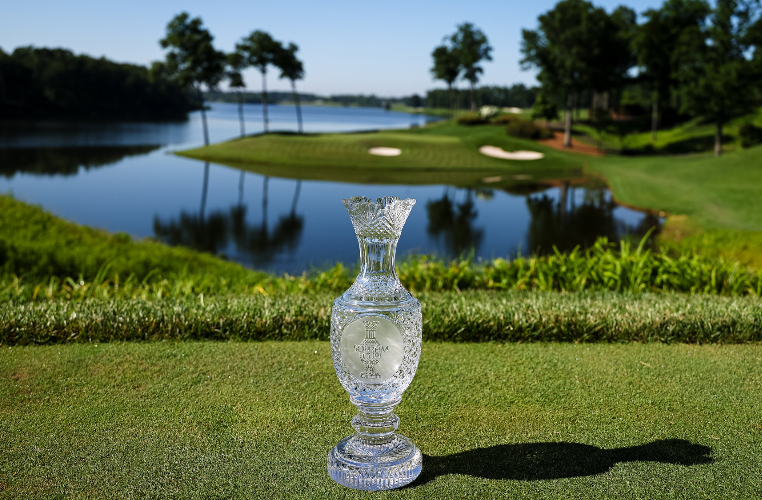The whole thing began from the air, a casual glance out a portal-sized window on a private plane.
In 1973, Robert Trent Jones was the most famous golf architect in the world. His career had skyrocketed after working with Bobby Jones (no relation) on Augusta National Golf Club, creating the current 11th and 16th holes, moving the 10th green back to its current location and retooling the bunkers and greens complexes so that Augusta was more a Jones and Jones design than anything resembling an Alister Mackenzie. R.T. Jones had also worked with Bobby to create Peachtree Golf Club in Atlanta, a course where one of the world’s greatest amateurs said, “I corrected all the mistakes I made in Augusta.”
By the 1950s, the architect Jones, who started going by his middle name, Trent, to tamp down confusion between himself and the legendary player, earned more than $600,000 a year, a sum second only to Ben Hogan in the game. He was the post-World War II version of Donald Ross, designing courses all over the world. Duke University Golf Club, which he designed, is still considered a masterpiece of modern architecture, and Firestone Country Club and Hazeltine National have tested the world’s best for decades.
But the land he loved most was spotted while flying over Washington D.C. “Jones saw this land situated on the shores of Lake Manassas out the window of an airplane, and he loved it,” said Matt Freitag, the current general manager at Robert Trent Jones Golf Club. “From that time forward, he tried to negotiate a purchase.”
An architect negotiating for his own course seemed radical, then and now. Most designers end up with equity because developers can’t pay their design fees. But by 1973 and throughout the rest of his life, Trent Jones lived with a maverick streak, one born from a harrowing experience.
In 1971, almost two full years before seeing the wooded shorelines of Lake Manassas, Trent was at a palace party with his good friend King Hassan II of Morocco. Jones had designed Royal Golf Dar Es Salaam, the king’s private course, and was in the North African country to celebrate His Highness’ birthday with 1949 Masters champion Claude Harmon, who was the king’s personal instructor.
That’s when troops stormed the palace in an attempted coup. The ambassador of Belgium was one of 130 people killed. Jones and Harmon lay facedown at gunpoint for hours while screams and automatic weapons reverberated in the background.
Hassan II regained control, but Jones was never the same. Fireworks bothered him for the rest of his life. And from that moment forward, he took more risks, living larger than any course designer in the world.
So, when he saw the land where Robert Trent Jones Golf Club now sits, he spent almost two decades working on a deal. In 1988, he finally put the land together. And in 1991, the club opened.
“He said this was the best piece of land on which he had ever designed a course from start to finish,” Freitag said. “He either designed or remodeled more than 400 courses around the world and this was his favorite piece of land.”
That’s something considering that Jones built Valderrama in the cork groves of Soto Grande, Spain, on the Mediterranean in the shadow of Gibraltar. He also designed Adare Manor on the greenest spot in Ireland.
Still, his Virginia club, where the Solheim Cup is being contested this year was his favorite, by far.

Then PGA Tour commissioner Deane Beman knew a gem when he saw one. Beman was also a maverick, having built the TPC network of clubs as a funding mechanism for the PGA Tour pension plan. Beman was also a four-time Tour winner and a U.S. Amateur and British Amateur champion who grew up in Washington, D.C. and attended the University of Maryland. Nothing in golf got built in the Mid-Atlantic without his knowledge.
When he saw what Trent was doing at RTJ, Beman proposed a radical idea: hosting a match-play event in years opposite the Ryder Cup that would include the world outside Europe. He got his old golf buddy and summer neighbor from Kennebunkport, Maine, President George H.W. Bush, to sign on. And the Presidents Cup was born, with Robert Trent Jones Golf Club as the host site.
Gerald Ford chaired the first Presidents Cup in 1994 at RTJ. Hale Irwin was the U.S. captain, with Australian David Graham leading the Internationals. It was a U.S. rout, 20-12.
The second edition, also at RTJ in 1996 and chaired by George H.W. Bush, was a shootout. Led by five-time Open Champion and Australian legend Peter Thomson, the Internationals almost pulled off an upset against a strong U.S. squad captained by Arnold Palmer. The score was 16.5 to 15.5 in favor of the home team.
Off the event went to Australia in 1998 – the first team event that included Tiger Woods and David Duval. Not only did the Internationals win, they did so by the largest margin in the event’s history, 20.5 to 11.5.
That set up a grudge match in 2000 back at Robert Trent Jones Golf Club. Thomson led the Internationals for the third time, while Ken Venturi was tapped to captain the American team. Unlike the previous editions, this one brought people out of the woodwork. Fans flooded Gainesville, Va., for the week. Bruce Hornsby played a packed show at the opening ceremonies, where President Bill Clinton got on stage and welcomed everyone.
President Clinton came back for the matches and greeted a group of journalists behind the 11th tee like old friends, pulling them close and asking about their golf games as Davis Love III and Phil Mickelson thumped Nick Price and Mike Weir 6 and 4 in foursomes.
One journalist walking with Thomson got an impromptu playing lesson that week. After Jim Furyk took a near eternity to get his yardage, a flustered Thomson said, “You know, when I won all those Open Championships, I didn’t carry a pin sheet because I didn’t care where the pin was. If I hit the middle of every green, I knew I’d be close on five or six holes, and the others, I was never going to have more than a 25-footer. And I’m a good putter.”
Freitag laughed at that story. “That logic would benefit so many players today, at every level,” he said. Then he added about RTJ Golf Club, “Greens complexes are this course’s biggest defense. The greens are sectioned off into three areas where you can use contours to get the ball close to the hole. It’s a course where the greens are bigger than average, but they play small because of those contours. The ball strikers who have the vision to use the contours will benefit more than those who just go for the hole.”

There have been changes since those early Presidents Cups. The matches came back in 2005 after a tie in South Africa in 2003. Jack Nicklaus captained both of those teams with George W. Bush on-site in Virginia. The U.S. won in 2005 18.5 to 15.5.
That course was a little different than the one Jones founded in 1991. It is different still today.
“Kyle Phillips has been our architect since 1998,” Freitag said. “He was an understudy of Robert Trent Jones. Our most recent renovation opened in 2023. Most of the changes have simply been adjusting to advancements in the game – repositioning of some bunkers and adding some length – but he also opened some vistas to the lake.
“The last 11 holes play along the water, but that property was quite heavily treelined. With the beauty of Lake Manassas – there are no boats, it’s a reservoir – we wanted to open some sightlines to the water. That also opened airflow, which allowed for better conditioning.”
The biggest changes are the first and third holes where length was added and more lake vistas opened. But the course retains its original parkland feel with Jones’ traditional bunkering that places a premium on driving it straight.
“It’s a challenge, for sure,” Freitag said. “We hosted four Presidents Cups and then the 2014 Quicken Loans (on the PGA Tour). Now, we’re hosting international golf with the Solheim Cup. It might be a property that is unfamiliar to those who don’t follow golf all that closely. But it is one that has a history to it. It has hosted a lot of high-end competitive golf, and we think it’s going to be a great venue to showcase the best women in the game.”




















